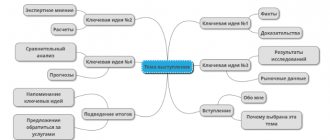This article opens a series of articles - if it turns out that Habracolleagues find it interesting, because the first rule of public speaking
says:
tell people about what interests them
! If you have never spoken in public before or are afraid to do so, this is for you. If you consider yourself an experienced presenter, the second article in the series is for you.
In today's article, I write about how to give a talk and write very little about the content of the talk. If it becomes clear from the comments that you still need to talk about the composition of the report (statement of the problem -> solution options -> selection process -> chosen solution -> result) or about the basics of public speech (don’t “hack”, don’t “moo”, don’t talk through the word “t-hide” and do not end phrases with obscene interjections) - I’ll tell you next time.
Historical note: there was already a small discussion on this topic on Habré a year ago.
The smallest group of people I ever spoke to was three people (I don’t count one-on-one negotiations), the largest was 800 people in the Sun Tech Days conference hall in Hyderabad, India.
This text is not a set of mandatory rules, it is a statement of my personal experience. What worked for me can work for you, and what didn't work can too. I don’t give universal advice, I will tell you how I myself do it so that the audience finds it interesting.
I spoke mainly to system administrators, developers, technical specialists and students of technical universities, as well as at scientific conferences. Therefore, my experience is applicable to similar situations. If you are going to give a presentation at a conference of lawyers or cosmetics sellers, use my advice with caution.
Preparation
The second rule: know the interests of your listeners before preparing your report.
The report must be well prepared. It's ideal if you tell people what you know well. What if you bought the text of your thesis yesterday, and tomorrow you have to report it in front of a room of evil teachers? And you have to go to the client to tell him how to use the admin panel of the new site, and this is the second time in your life you’ve seen this CMS?
The only way out, if you don’t know much about the topic as a whole, is to study the interests of your listeners and talk about what is more important to them about this topic. For example, if you are afraid to talk about the new version of Solaris because you don’t know what’s new in it, and you need to speak in front of system administrators, you can focus on what is important to them - for example, on administration tools, or where in the new version, settings have been transferred compared to the old version.
Rule three: prepare good slides
It is not necessary to give a presentation with slides, but most listeners now expect the speaker to stand next to the projector, and you can look not only at his high forehead and good suit, but also at the illustrations for the report. For listeners of the speaker in a miniskirt, the slides also play a distracting role: there is no point in staring at other people’s knees the entire time you are defending your thesis.
If you give a report with slides, do them conscientiously. I want to dedicate a separate article to slides. In short, slides are good if:
- on the slides - what helps people understand the essence of the matter. A report is not a comic; having a slide for each phrase is overkill
- The slides are easy to read from any row in the hall. Few people will see a font smaller than 30.
- a standard slide is 5-7 lines of text, no more. Better - five: a title, a thought and three sub-thoughts
- A clearly visible graphic element is desirable on each slide: diagram, photograph, drawing. A slide with text without graphics looks like a hint to the speaker.
The exception is slides with code at developer conferences: sometimes the code just needs to be shown, and the main thing in the code needs to be highlighted in color. However, the code should still be readable from afar: remove any code that is not directly relevant and write the remaining code in 30 point size.
Report time
Usually the speaker is not free to choose how long to speak.
The thesis defense takes 15-20 minutes, the dissertation takes 20-30, and the most convenient format at conferences is 20 minutes. A good speaker always stays within the allotted time: by doing this, he will show that he respects the organizers, the audience, and other speakers. For reference: one full A4 sheet, printed in 12-point size - approximately 5-7 minutes of presentation (if you speak without pauses). One slide - at least a minute (if you have a slide that you show for five seconds, remove it, no one will study it in its entirety anyway).
The psychology of speaking in front of people
In order to attract people's attention, psychologists advise:
- Pay enough attention to your appearance (dress comfortably and respectably).
- Take a short pause before starting and look around the audience, making eye contact.
- Start your performance at a slow pace.
- For public speaking, it is recommended to lower the timbre of your voice by 2 tones (this will help protect your vocal cords; a low voice is perceived by people better than a high one) and develop the skill of using various voice techniques.
- Repeat the most important thoughts 3 times.
- Do not exceed the speaking limits, even if the audience’s attention has not weakened.
Successful performance
Thus, if you prepare diligently, then everyone will be able to perform well in front of the public.
Checking equipment before the report
At any decent conference, speakers are asked in advance (on the day of the talk or even the previous day) to check that their flash drive, laptop, and other equipment they need is compatible with the equipment provided by the conference organizers.
In the case of defending a thesis, this will be a banal check that the cathedral projector connects normally to your laptop and displays the picture in the resolution that you need. Be sure to check that all programs that you will use during the report (xterm, exceed, Adobe Reader, OpenOffice Impress, etc.) show what you need, in the required resolution and without shifts on the screen. Even experienced presenters get confused when the most interesting part of the window is off the screen.
Make sure the computer you are using to show your slides can read what you have them on.
These rules seem obvious, but dozens of people (including myself) have regularly felt uncomfortable in front of listeners over such little things.
Possible mistakes
Oratory skills do not come immediately; many novice speakers make typical mistakes:
- They demonstrate a lack of confidence (the speaker has little knowledge of the issue being covered or is afraid of people).
- They begin to make excuses and lose the trust of the listener.
- Do not illustrate the speech with examples from experience or literature.
- They use excessive gestures and chaotic facial expressions (to control body language, they analyze the video recording of the performance and get rid of unnecessary movements).
- They do not select words and compose sentences accurately (for example, frequent use of negative particles will lead to misunderstanding of the text).
- They pay little attention to preparation.
- They read the message monotonously without humorous asides and do not maintain eye contact.
- Do not use pauses to maintain attention - stopping for 10 seconds will awaken the curiosity of all distracted people.
- They show excessive seriousness, self-confidence and over-erudition.
- They use a large number of filler words.
- They fuss or, on the contrary, become tight.
Important! High-quality preparation and repeated rehearsals allow you to avoid many mistakes.
Speaker mistakes
Beginning of the report
The fourth rule: involve listeners in communication.
What to do if the interests of the people in the room are unknown? First: try to find out who should come from those who organize your speech or the conference in general. Second: at the beginning of the report, ask those who came what interests them.
Asking those present at your thesis defense what they are interested in from your work is arrogant. There it is customary to tell what the leader advised. However, at a meeting with colleagues or in front of clients, this is quite natural: for example, in the courses on UNIX, which I have been teaching since 1993, before the start of the course I always ask each student what he (or she) personally expects from course, and how he plans to apply the acquired knowledge.
Whatever the listeners answer, there is no need to change the course or report radically, but taking into account interests and talking about one topic more than another, if asked, is good form. This is not necessary, and you should do this only if you know more about the topic being discussed than you are going to tell. Otherwise, stick to the chosen line in the report and avoid unplanned retreats.
If you are asked questions that you cannot answer, avoid them by telling the facts you know about the topic, and if you cannot avoid the question, try to think out loud, involving your listeners in the process of finding an answer: “is it possible to print from Linux?” on HP LaserJet 1100? Let's think together. Modern GNU/Linux uses CUPS as a printing subsystem, right? If it is CUPS, then to configure the printer you will need a .ppd file, and therefore you need to look for this file on the HP website or simply on the Internet. If the file is found, we will be able to print on the HP LJ 1100 from Linux.”
As a last resort, take the listener’s e-mail and promise to respond as soon as you find out the answer to the question. The speaker is not required to know everything, but showing goodwill and a desire to help is useful.
Introduction
Ancient rhetoric is of great importance in preparing public speeches (rhetorical canon). The Greeks also noted that Dimosthenes’ speeches were saturated with the oil of the night lamp, by the light of which he composed them.
Learning public speaking is a very long and dynamic process that requires constant work on oneself and a lot of speaking practice (conversations, negotiations, communication with mass audiences, participation in debates, etc.). Based on this, an important place in a speaker’s activity is occupied by daily preparation for a speech, that is, a continuous process of working to improve one’s oratorical skills, systematic rhetorical self-education.
Currently, the issue of public speech is very relevant. In recent years, a profession where the main aspect is a person’s ability to communicate has become very popular. Which explains the relevance of our chosen topic.
Presenter's pose
Mountains of text have been written and petabytes of video courses have been filmed regarding how and where a speaker should stand. For those who for some reason have not seen them yet - a short summary:
- stand in an open position, avoid crossing your arms over your chest, stomach and genitals;
- move freely around the space allocated to you in front of the audience (stage, part of the hall); avoid immobility;
- look into the hall, best of all, choose a person you like in the hall and look at him as if you were telling your report to him personally; it is better to choose several such people, and periodically look from one to another; Avoid constantly looking to the side, at the floor, at the ceiling. Thoughtful, looked out the window or to the side? This is normal, but there is no need to lose eye contact with the audience: return your gaze to the audience;
- never, you hear - never - read the slides. I myself have sometimes made this mistake, because if the slides are done well, there is always a temptation to sneak a peek at what to say next. A slide is not a prompter, it is an illustration of what you are telling. Reading the slides is bad manners. Try to recite the report from memory. You won’t tell your friend about a friendly drinking session while looking at your notebook, will you? So the report should pour out of you on its own, without hesitation or peeking. Believe me: the speaker reading the slides looks pathetic from the audience and evokes sympathy at best, and disgust at worst;
- Gesture - in Russia the audience will approve of moderate gestures. I mean polite gestures, of course. However, if you want to risk becoming a YouTube hero for an hour, you can show something indecent at a crowded conference. The scandal will be remembered by many, your name is not guaranteed. Do many people remember the name of the TV presenter who accidentally raised her middle finger when pronouncing the name of the US President? No, but the fact was remembered.
Content
- Features of public speaking
- Types and types of speeches by purpose
- Performance styles by form
- Rules of public speaking
- Public Speaking Techniques
- The beginning and end of a speech in front of an audience
- Possible mistakes of speakers
- The psychology of speaking in front of people
Public speaking is not just a speaker talking to one or more listeners. This is not a conversation in the square, where sometimes with one gesture you can pacify an impudent person or, conversely, with one smile you can set up an entire new campaign. There is a whole classification of public speaking, without which it is impossible to comprehend the theoretical basics of oratory. It includes types of public speaking by purpose and form.
The report itself
Fifth rule: speak briefly, give specific examples from life.
The report should be as short as possible: avoid “water” in what you tell. People like concrete examples: when I talk about how the UNIX way is many programs, each of which does only one thing, and does it well, I immediately explain why this is convenient: for example, the grep program is equally good at analyzing log -files and to search for a file with the desired piece of code in the src/
.
The report should have room for light improvisation or jokes. If you know what kind of audience will listen to you, try to prepare examples that are close to them. For example, when speaking to employees of a building materials sales office, you can safely joke about yesterday’s hangover. For clergymen and female students of the philology department, other jokes will probably be suitable.
Rule Six: Be Emotional
The people listening to you should not fall asleep. You cannot speak monotonously and sadly, you must speak with expression, like reading poetry at school. Are you talking about how to set up MS Exchange Server? Do you think it’s incredibly cool to set up a corporate email system by clicking three “Next” buttons (there should be a tag here)? Tell everyone how wonderful it is! Smile, raise your hands to the sky, raise your voice, ask your listeners: “Isn’t this so great?!”
Emotionality is not hysteria; emotions should be a seasoning for the content of the report. Definitely, there should be something in the report that you like: talk about a subject that disgusts you only to those whom you want to dislike the subject (or to you, if you hate cats, babies, young girls or what something else everyone loves).
Dilute your report with jokes: one joke per five to ten minutes of report is a good proportion. Jokes can be prepared in advance, or you can come up with them on the fly if you remember bash.org
by heart and you can remember something to the point. If the report didn’t go exactly as you planned, and the prepared joke is no longer appropriate, leave it for next time: inappropriate humor looks forced and increases pity for the speaker.
Questions during the report
Rule seven: the speaker is the master of his time
Decide in advance whether you can be interrupted with questions during the report. If you do not have a known high authority among the audience, if you are afraid of losing your thoughts, if you are uncomfortable going away from the topic of the report, ask all questions to be written down at the beginning of the report and asked at the end. This can be explained in different ways: from “I’m a crazy control freak and I can’t vouch for myself” to “today I want to tell you a lot of interesting things, and if we interrupt often, we may not have time.”
In order not to go beyond the rules, be sure to ask one of the organizers to keep track of the time and give you a signal ten and five minutes before the end. At many conferences, for this purpose, a timer is placed in front of the speaker with his back to the hall, which shows how much time is left until the end of the report. At worst, a smartphone or watch placed in front of you will do, but so that it can be seen from where you walk during the report.
It can be simpler: if sometimes you look at your watch to check if you are talking, no one will be offended, although they may think that you are late for the train.
It is good practice to leave about five minutes at the end of the report for questions; if you told something interesting to the audience, and it does not take place in China, you will definitely be asked questions. In China and some other Asian countries, it is not customary to ask questions publicly, and you can tell the audience that after the report you will be drinking tea in a cafe around the corner, and if anyone wants to clarify anything, you will be happy to do so over a cup of tea .
Rule Eight: Maintain composure and a sense of humor
Who likes it when everyone laughs at him? Therefore, if you find yourself in a funny situation during a public speech, treat it with detachment, with humor, and laugh yourself. Stumbled and broke a chair on stage? It doesn’t matter, remember “damn it” from “The Diamond Arm” or some one close to the audience and you’ll have a relevant joke.
The main thing is to observe moderation in everything. If you came out in a dirty suit and had to shake yourself off on stage, don’t spend the entire report nervously removing specks of dust from your jacket; If you put a stain on your tie before a performance and you don’t have time to wipe it off, act as if the stain isn’t there. There is absolutely no need to make fun of yourself throughout the entire report on this matter - after all, if the report is interesting, everyone is looking at your mouth or eyes, and not at your tie.
What is public speaking
Public speaking is a public event during which the speaker (speaker) conveys certain information to the audience. Features of such representations:
- the presence of a group of listeners,
- predominant monologue speech,
- thoughtful structure of the statement,
- specific goal.
Depending on the purpose and audience, the style of presentation is chosen; for greater efficiency, various electronic tools are currently used (videos, presentations, audio recordings, and others).
A public speech can be considered any monologue speech aimed at several listeners (announcing a concert to the whole class, a student’s answer at the blackboard, speaking on stage, teaching a lesson, congratulating a friend at a holiday table, and so on).
Completion of the report
The end is the crown of the whole thing.
At the end of the report, it’s nice to hear a cheerful conclusion (“therefore my thesis is the first step towards a doctoral dissertation”, “as you can see, the project can really bring our company an income of 493,000 rubles a year”) or a logical conclusion (“agree , every developer will be glad to use such a powerful tool as dtrace"). It’s good form to include on the penultimate slide the sources of your inspiration (list of references) and/or those books and sites that you advise listeners to read, and on the last slide - a way to contact you (in case someone in a year needs to clarify the name of that book , which you mentioned in passing on the third slide from the end). There is no need to leave your mobile phone - just an e-mail.
Stages of public speaking
How to flirt with a man correctly - rules and examples of flirting
Almost all performances go through 3 stages:
- Pre-communicative (preparatory) stage.
- Communication stage:
- establishing a relationship with listeners;
- concentrating and keeping the audience's attention on the problem;
- arguing and proving your point of view;
- summing up and concluding the speech.
- Post-communicative (analysis of the positive and negative aspects of the event, personal conclusions of the speaker).
Important! Listeners remember best the ending of a speech, so speakers carefully think through the verbal design of this part in advance.
Important detail
The report cannot be read from a piece of paper.
If you want to come across as an energetic and successful speaker, read the report from memory. Looking at a cheat sheet two or three times in half an hour is not a sin, but reading the entire report from a piece of paper is a disaster! The cheat sheet should look decent (a pack of two A4 sheets in your hand, I think, looks neutral, but a piece of paper clutched in your fist looks suspicious). And now, patient reader, you can vote for the article - and thereby hint to the author whether he should prepare future articles - about how to get out of difficult situations during reports, about how to make slides, and about how to correctly write a resume and cover letter if you want to work in a Western company.
UPD:
thank you golodnyj for the note on the font size on the slides: the correct minimum size that is normally visible in the room is not 14, as I initially wrote, but 30. In my presentations there were up to 24, but in such cases I didn’t like myself for it. It's better to stick to 30 point.









